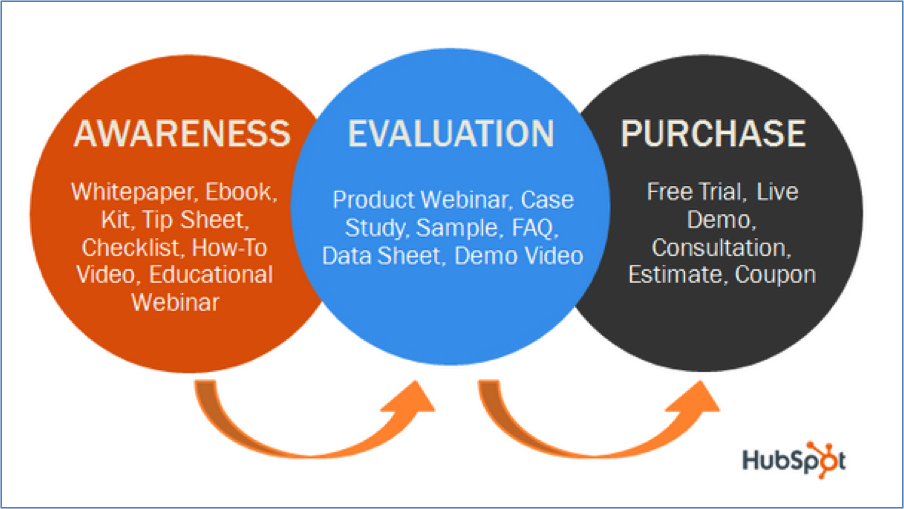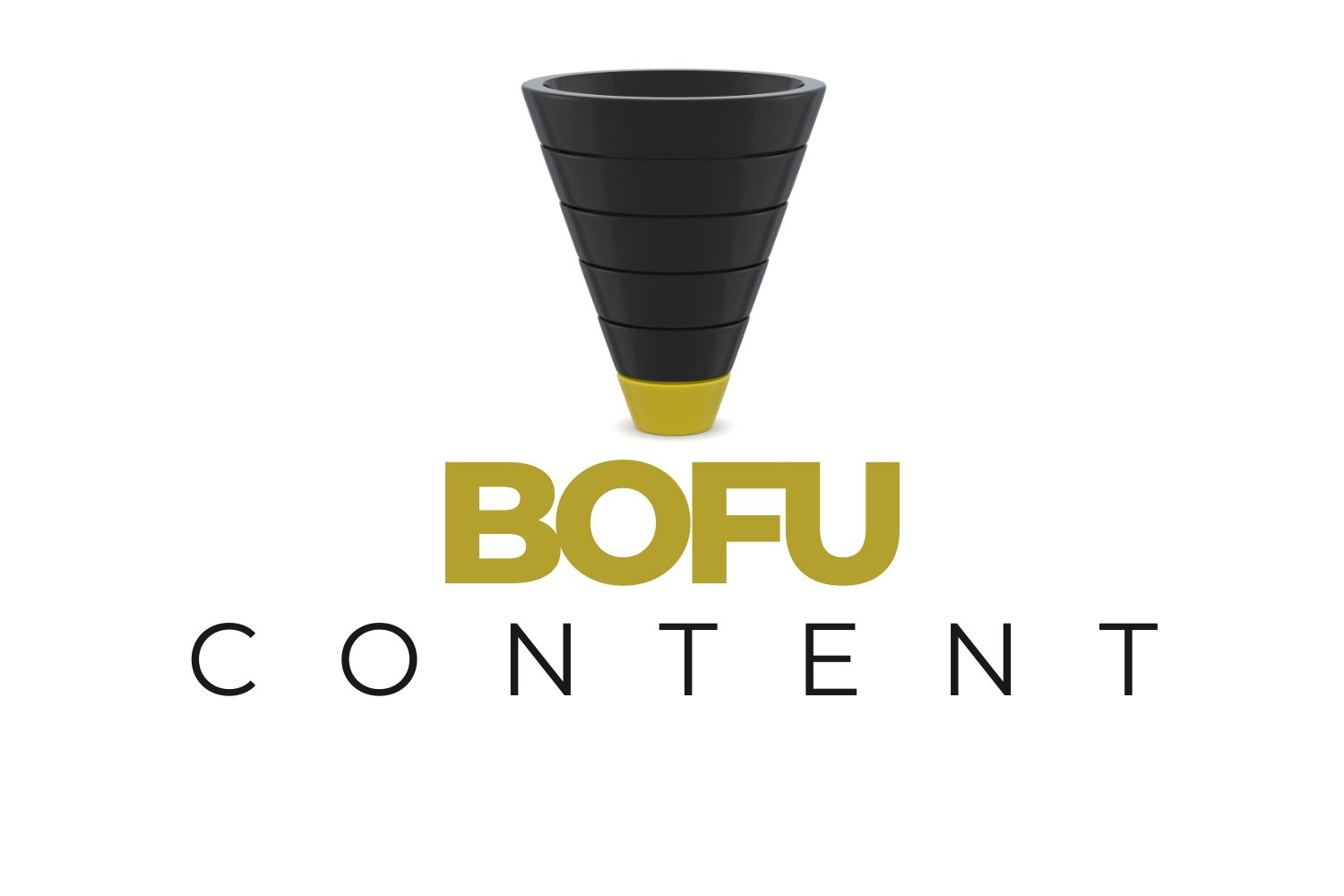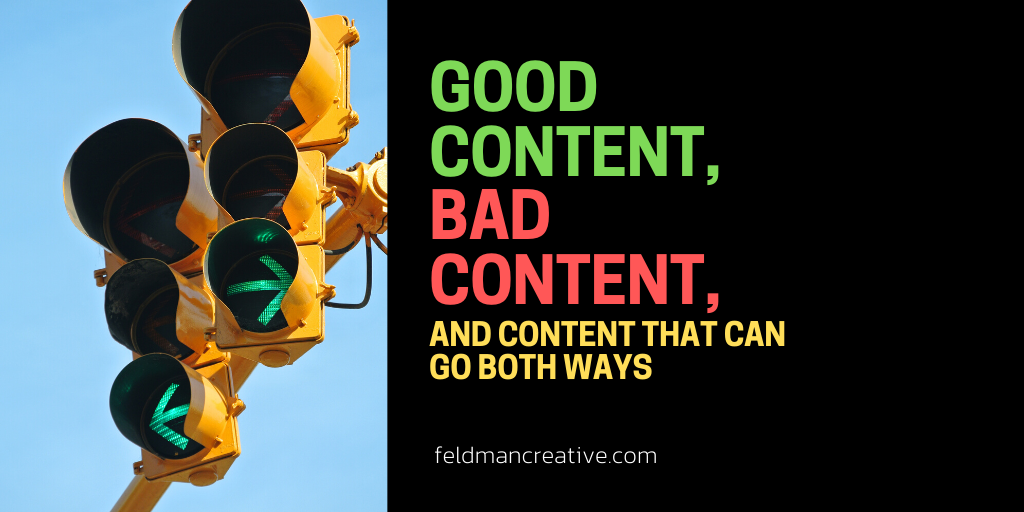There’s no denying the content marketing plan that quadruples leads is rare.
Why? It’s an ambitious goal. And ambitious goals are usually not achieved without a plan.
Most companies don’t have a content marketing plan. And most companies don’t succeed with content marketing. You can connect the dots.
But you actually can quadruples leads—or achieve other impressive achievements—with content marketing. Of course, it will require great content. It will require great marketing. It will require quantifying and qualifying the objective. How many leads? What’s a lead?
Above all, it will require a content marketing plan. You need to get one together. Not soon. Not next week. Now.
So power-down your phone and plug into this post. I’m going to give you a solid plan for creating a solid plan. Sound like a plan?
The idea here is to document a strategy
The tasks you never seem to get done are long and laborious. Failure’s not an option, so let’s make your content marketing plan short and simple.
Later, when you’re implementing your content marketing plan, you’ll make some revelations. The plan you’ll put together today may prove imperfect.
So you’ll amend it. Even the best-laid plans get amended.
The planning shall hereby commence
You begin your content marketing plan by establishing objectives.
You probably want to generate leads. Write it down. Or cut and paste:
The objective of our content marketing is to generate X leads.
X can be a number (with a unit of time) or percentage. If you have a different objective, that’s fine. Replace the “generate X leads” part.
If you don’t have an objective, you have no need for a content marketing plan. But—and a great BIG but—you also have no business doing content marketing. You’ll be wasting time.
Okay? Now, I don’t mean to be fussy, but next I want you to define “lead.”
A lead is defined as a new email opt-in.
Copy and paste that one too. You might define a lead as a phone call, trial, webinar registration, download, survey completion, or some other action. Fine. You know what to do: replace the italic part.
Your plan has purpose now. You need to keep score. Add this:
We will measure leads with (specific tool), (specific interval) and record it in (specific document).
The above might look like this:
We will measure leads with Campaign Monitor, monthly, and record it in our email list growth report.
You’ve documented and defined an objective. That’s powerful. But you probably have additional objectives: improve support, increase retention, build community, establish greater authority, etc. If so, repeat the exercise for each. Your content plan is getting even more powerful.
This is going quite well.
Who goes there?
Effective content marketers know precisely who their customers are and what makes them tick. Though the chilly word “persona” must become central to this step, it should result in giving your potential customers faces, names and motivations.
Start with the ideal customer. Most marketers develop a fictional person, but a real one works too. There may be some research involved, but you really should know your customers. Who are they?
Use this template and simply fill in the blanks. Feel free to add and subtract items depending on the things that matter most. B2B personas will differ from B2C personas.
- • Name (consider using a photo too)
- • Job/role
- • Job responsibilities (or life responsibilities)
- • Toughest challenges and most pressing needs
- • Pains (and pleasures)
- • Role in decision-making
- • What influences him or her?
- • Media consumption preferences
The task of creating personas tends to be unnecessarily complicated when it’s explained (and interpreted). Don’t let it. Knock one out right now and if you’ve only described one of several persons that make-up your customer base, repeat the process as needed.
What’s your story?
No, I’m not going to get into the fine art of storytelling. We’re working on a plan here, not prose. However, I want the next two passages you add to your plan to:
- Define what makes your company unique.
- Define your content marketing mission.
Number one should be your selling (or value) proposition.
Why do people do business with you? It may come as a surprise, but the answer is probably not the thing you sell. Delve into the who, what, when, where and why and you’ll hopefully uncover something magical…
An emotion.
Find it and put it down. I’ve made-up a company to demonstrate.
SayHeyPayDay puts employers’ minds at ease knowing they don’t have to fuss with the tedious task of issuing paychecks.
Number two is your content marketing mission.
As a content marketer, you are a publisher. So we’ll follow an age-old publishing practice: defining your publication.
Your content marketing mission needs to:
- • Articulate your approach to the content and industry.
- • Clearly define whom the content is for.
- • State how the content will satisfy the needs of those that consume it.
For example:
SayHeyPayDay publishes a blog and information resources for employers of 5 – 5,000 people to teach them ways to create a happier and more productive workforce.
That’s your story: why you matter and why your content will too. Write it down.
How can you help?
Another hunk o’ marketing speak enters the fray here: the funnel.
The funnel is a metaphor to symbolize the progression of a person from stranger to prospect to customer. Let’s allow it to remain as simple as this:
- • Stranger. He or she didn’t know your company before. That just changed. Thanks to your content marketing, you’ve achieved awareness.
- • Prospect. The person has demonstrated interest. He or she is doing research. As a marketer, you are challenged to help them with evaluation.
- • Customer. The person is making the action you seek, buying, most likely. You’re a useful marketer because your content has inspired a purchase.
Rest assured, different organizations will have different names for the steps. Different descriptions. Often, they’ll have more steps. It’s your funnel, so have it your way. What matters is you’re comfortable with a reasonable description of the buying cycle in your customers’ journey. K?
Document the steps. Do so on the horizontal axis of a matrix because next you’re going to populate the vertical axis with content types.
Source: HubSpot
Plug in content types. The image I’m showing you here does a nice job of demonstrating the concept and providing examples. Could some of the content types blur the lines or gravitate to the left or right in your model? Probably. Don’t fret too much about this. The goal is to determine:
- • What you have
- • And what you don’t
Here’s another take on the same idea, presented as top, middle and bottom of the funnel content, courtesy of Gini Dietrich of SpinSucks.com.
Of course, determining the have/have-nots in your content audit beget additional considerations:
- • What performs well and what doesn’t
- • What will be easy to develop and what won’t
- • What questions do prospects have (at varying phases in the cycle) and what’s the best way to answer them
At this point, try not to get bogged down with content production challenges. Think big. Make a buying cycle matrix that covers all the bases.
Think like a publisher
Your personas defined potential customers. Your selling proposition and mission statement defined your story. Your buying cycle matrix defined your content production needs.
Now it’s time to satisfy them. Given the array of content types, you may not know exactly what to create. You’re going to have to settle for good guesses. Over time, the results will help steer the course. Begin by considering the most popular, and often, effective options.
- • Blogs
- • Newsletters
- • Social media
- • Events (online and off)
- • Case studies
- • Videos
- • Podcasts
- • eBooks and white papers
- • Presentations
- • Infographics
- • Webinars
- • Research reports
- • Microsites
- • Apps
Long-term, you’ll do some research. You’ll test. You’ll analyze your metrics. You’ll repurpose winners, dump losers, and refine middle-of-the-pack stuff. But short-term, you’ll speculate, make some decisions and create a content marketing calendar. Bloggers tend to call it an editorial calendar.
Create a worksheet. For each item, dictate a:
- • Date
- • Owner/author
- • Format/channel
- • Brief description (or title)
- • Persona
- • The need addressed
- • Buying cycle stage
- • Call to action
- • Useful metric(s) for assessment
Do this for a month or maybe a quarter. Any longer probably won’t be useful.
Plan for distribution
It’s only fair I warn you: most content drifts about unnoticed in the crazy big sea of media.
Of course, I don’t want to foil your plan. I want to facilitate it. So I shall be loud and clear:
You need to make CONTENT DISTRIBUTION AND PROMOTION a part of your plan.
Content marketing expert Jay Baer often says, “Content is fire. Social media is gasoline.”
See? Jay also wrote, “You must market your marketing and create a distribution plan for each piece of content.” Solid advice. Consider your resources (and, of course, your audience) and attempt to make smart choices amongst:
- • Social media networks
- • Advocacy programs
- • Search
- • Paid search
- • Advertising
- • Sponsored content (on blogs and social networks)
- • Guest posts
- • PR
Map your strategies per content type. For instance…
- • We’ll promote our blog via (Twitter, LinkedIn and Google+).
- • We’ll promote our webinars via (our enewsletter and PPC ads).
- • And so on
Again, adjust the specifics in italics to your needs.
I have some awesome news. Your plan’s getting progressively powerful.
Measure what matters
Content analytics and metrics are your friend. Not true? Then it’s time to cozy up the all-important number crunching component of content marketing.
Like the planning process at large, it need not be overly complicated. Apply this simple approach: the objectives you’ve documented inform the metrics you’ll use.
If your objective is to generate leads, you will measure how many leads you’ve generated. In my post, Content Analytics Simplified, I’ve categorized metrics into five categories and explained how to get the numbers and what they mean.
You need not track a massive list of metrics. You documented your objectives. Make a short list of the most meaningful metrics that indicate your progress and create a simple dashboard for tracking them.
And that’s your plan
Yes, it’s work. But it’s important work. It requires thinking, the thinking accomplished content marketers do because they understand the content marketing plan is the foundation of a successful content marketing program.
If you’d like to see more resources related to content marketing strategy, you’ve come to the right website.











Comments
Don Sturgill
Good work, Barry. Plenty of solid info.
Mia Sherwood Landau
What I like best about this post is its relevance for big kids and little kids alike. Great ideas even for beginners and solopreneurs.. Thanks, Barry!
Philip Verghese Ariel
Hi Barry, Good to hear you today at Ryan’s page, wonderful talk show. and happy to be here at this wonderful and informative space. Thank you so much for providing such a lot of info at one go! I am bookmarking it for my further study. This is great indeed> May you have a great and profitable December 🙂
Phil
Barry Feldman
Philip, I’m really glad you enjoyed Ryan’s program and made your way to my blog and email list. Thanks so much for the feedback. I hope to continue giving you resources you value.
SEODummy
Fantastic article Barry. As usual very Informative and very readable.
Mike-SEODummy
Barry Feldman
Appreciate that, dummy.
How to Get Your Blog Post on the First Page of Google
[…] if you want to talk about creating immensely useful content while executing a strategy to rank atop Google SERPs (search engine results pages), you’d want […]
How to Get Your Blog Post on the First Page of Google
[…] The Content Marketing Plan that Quadruples Your Leads […]